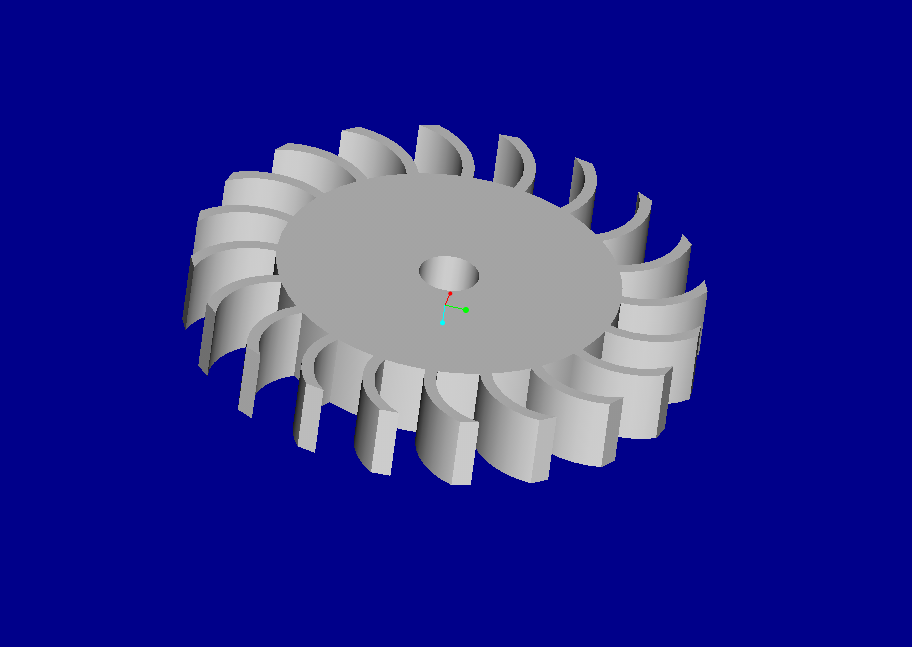


Project Title: Redesign of Brush Plate for B&D Northstar Screwdriver
Need Analysis:
In the current design of the Northstar screwdriver, the plastic brush box mount has a raised lip which has a 90° surface where it terminates. During assembly of the unit, the assembly worker inserts a tool over the brush spring mounting post that engages the brush spring lever arm. The worker then rotates the tool to move the lever out of the way to allow insertion of the brush into the brush box. If either too much or off center, downward pressure is applied to the tool, the chance that the lever will catch on the lip increases dramatically.
Redesign Proposal:
To make the termination a 60° ramp and to end it approximately 3 mm shorter than the current design. This design change will eliminate the occurrence that the lever catches on the lip in the assembly process.
Redesign Approach:



Project Title: Redesign of Air Deflector Grip for B&D Northstar Screwdriver
Need Analysis:
Users have been blocking air flow when using the drill with two hands. This creates overheating and increases repair costs.
Redesign Proposal:
The "Air Deflector Grip" adds a second handle for easy operation of the screwgun. It also deflect air to clean the working surface. The grip will prevent the user from blocking the air flow due to holding the drill, this should lower repairs due to overheating. The grip will be sold as an optional accessory for additional sales.
Redesign Approach:
Pro/ENGINEER Model:



Project Title: Redesign of Gear Case Cover to Eliminate Gasket
Need Analysis:
In the current design of the Northstar screwdriver, there two components in the gear sub-assembly. These components are gear case cover and gasket. The main function of the gear case cova is to prevent from leaking lubncants and keep the electrical housing free of grease. The main function of the gasket is, as a damping device, to absorb the vibration between the gear case and the gear case cover.
Redesign Proposal:
The redesign will focus on the gear case cover component to incorporate all of the functions of the gasket for the purpose of eliminating the need of having the gasket component. A successful completion of this redesign project will reduce the cost of the Northstar screwgun and speed up the gear case assembly. The first step of the redesign is to increase the width of the gear case cover to match the design of the gasket and in essence to take its place. In order to prevent the leakage of grease from the gear case to the electrical housing, a dght fit of the redesigned gear case cover will end the possibility for the lubricant agent to leak.
Redesign Approach:
Pro/ENGINEER Model:


Project Title: Modification of the Adjusting Collar of the Adjusting Collar
Need Analysis:
Modification of the Adjusting Collar of the Adjusting Collar
The team desires to improve upon the design of the adjusting collar which sets the position of the locator and prevents it from slipping during use. After extended use of the drill, torque which is consistently applied during the removal of the collar throughout a work day tends to rotate the locator away from its original position.
Redesign Proposal:
The redesign is to lock the locator and the collar during the operation after having been adjusted to a desired distance. To keep the cost of redesigning at a minimum, the team proposes alterations of the existing components and the creation of a new component to achieve the redesign goal. On the outskirt of the collar, a thread feature will be added. The new component is a locking nut with a built-in inner thread to match the thread on the collar. Mod)fications to the locator assure that the locking mechanism will work at the two extreme positions.
Redesign Approach:
Pro/ENGINEER Model:



Project Title: Redesign of Belt Clip for B&D Northstar Screwdriver
Need Analysis:
In the current design of the Northstar screwdriver, the belt clip is a poor design. Two main drawbacks are the thin wall structure of the clip support and sharp corners surrounding the connecting interface. The weak strength and high stress concentration will cause breakage of the belt clip during its serve. It is certain that the current design will provoke many returns due to failure upon its release to market.
Redesign Proposal:
Team E had selected the belt clip as a redesign project before being informed that B&D was redesigning the part Through finite element analysis and preliminary calculations, Team E has formulated new clip designs to solve the problem of the belt clip failures. In order to save the original casing, the team sets the requirement that the belt clips be designed to fit the original casing. This will save money by reworking all the original casing, instead of discarding them. Slight mod)fications which remove material and do not add material, are allowed. The three redesigns are:
Redesign Approach:
Pro/ENGINEER Model:



Project Title: Redesign of the Existing Fan in the B&D Northstar
Screwdriver
Need Analysis:
In the current design of the Northstar screwdriver, there is a fan component to cool the internal components and keep the temperature of the cabinet as low as possible. The redesigned fan will produce a greater air flow rate than the existing design without increasing the weight and/or size of the fan.
Redesign Proposal:
The main objective is to improve functionality without sacrificing manufacturability. A hybrid method between computational and experimental techniques is developed in this redesign project. The design concepts are generated and selected based on the theoretical knowledge. Two alternatives are under considerations. They are blades angled at 45 degrees and backward-curved blades. Optimization of the number of blades to maximize the air flow rate will be performed. An engineering drawing of the redesigned fan will be completed using Pro/ENGINEER, and a prototype of the redesigned fan will be built using the stereolithography process.
Redesign Approach:
Pro/ENGINEER Model:


